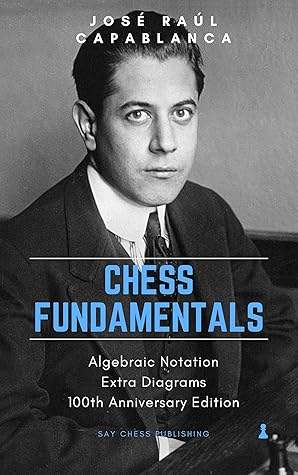More on this book
Kindle Notes & Highlights
Read between
August 21 - September 24, 2025
White can win by advancing any of the three Pawns on the first move, but it is convenient to follow the general rule, whenever there is no good reason against it, of advancing the Pawn that has no Pawn opposing it.
Before development has been completed no piece should be moved more than once, unless it is essential in order to obtain either material advantage or to secure freedom of action.
bring out the Knights before bringing out the Bishops.
No violent attack can succeed without controlling at least two of these squares, and possibly three. Many a manoeuvre in the opening has for its sole object the control of the c...
This highlight has been truncated due to consecutive passage length restrictions.
A unit that holds two.
when the Kings are on the same line and the number of intervening squares between them is even, the player who has the move has the opposition.
When the opponent has a Bishop, keep your Pawns on squares of the same colour as your opponent’s Bishop.
Whenever you have a Bishop, whether the opponent has also one or not, keep your Pawns on squares of the opposite colour to that of your own Bishop.
once the opportunity is offered, all the pieces are thrown into action ”en masse” when necessary; and that all the pieces smoothly co-ordinate their action with machine-like precision.
Direct and violent attacks against the King must be carried en masse, with full force, to ensure their success. The opposition must be overcome at all cost; the attack cannot be broken off, since in all such cases that means defeat.
But it always happens in such cases that, if one line of attack is anticipated, there is another; and this is no exception to the rule, as will be seen.
The winning tactics in all these endings have merely consisted in keeping the opponent’s Rooks tied to the defence of one or more Pawns, leaving my own Rooks free for action. This is a general principle which can be equally applied to any part of the game.
Keep freedom of manoeuvre while hampering your opponent.
In an abstract way we may say that two or more Pawns are strongest when they are in the same rank next to one another.


